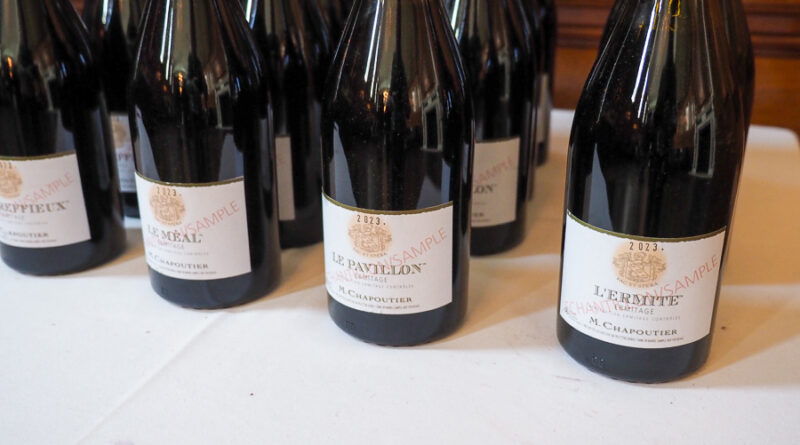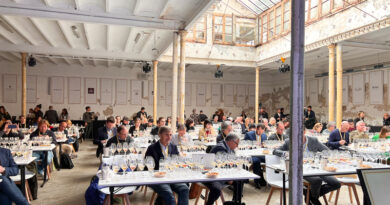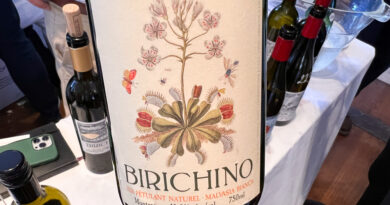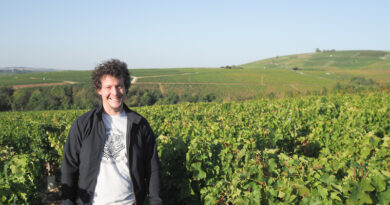Chapoutier’s Sélection Parcellaire releases, 2023
Chapoutier Sélections Parcellaires En Primeur 2023
When it comes to Rhône wines, no names are bigger than M Chapoutier. But not content with sticking to the home region, Chapoutier have also spread their winemaking operations to Alsace, the Roussillon and Australia. Keen not to have to repaint any of the large signs on the retaining walls in their vineyards, Michel Chapoutier’s two children Maxime and Mathilde both had names beginning with M. And Mathilde has just had her first child, who also has an M name, and Maxime and his partner have one on the way: will they also use a name beginning with ‘M’?
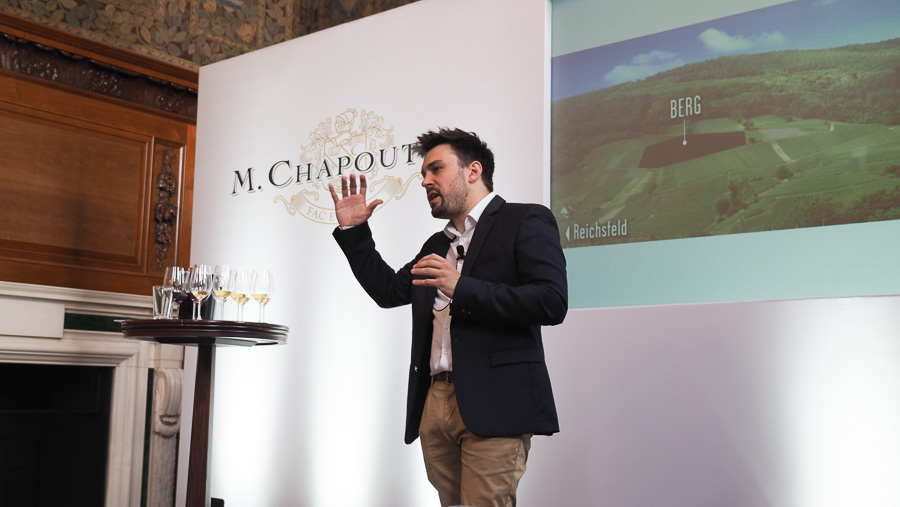
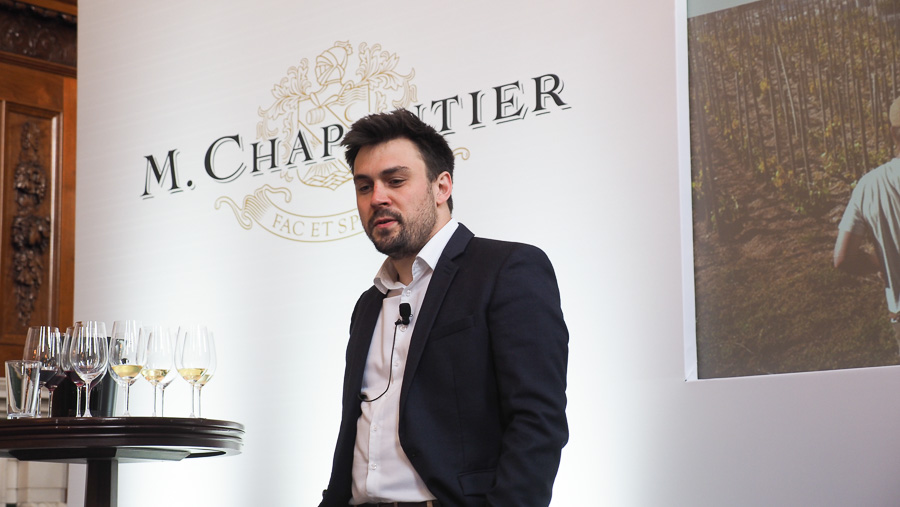
It was the 31 year old Maxime Chapoutier who presented this tasting. He’s now in charge of production. ‘Step by step my father is giving me space to express myself,’ he says. He emphasizes that the goal at Chapoutier is to make terroir-driven wines. ‘We are not trying to make a Chapoutier wine, but the best expression of a place,’ says Maxime. They also look to let each season express itself. ‘Every vintage is different and every vintage has a story to tell.’
Alsace
We begin with Alsace. ‘We have been in Alsace now for 15 years.’ This move was driven by a love of Alsace whites. ‘Even more than red wine producers we are white wine producers,’ Maxime explains.
‘We decided to settle down in Bernardvillé,’ says Maxime. It’s not farm from Colmar and what drew them here was a unique soil of blue schist. This is the only place in Alsace and indeed in France that you can find blue schist.
They have 8 hectares with Riesling and have begun planting Pinot Noir. 2023 was the first vintage in their new winery. They make Riesling in a dry style: they think that sugar can hide the expression of place. They vinify in 2000 litre foudres, and also have begun working with concrete eggs. 30 years ago they invented these eggs with Nomblot, and even though they have stopped using them in the Rhône, they think they are interesting for Riesling.
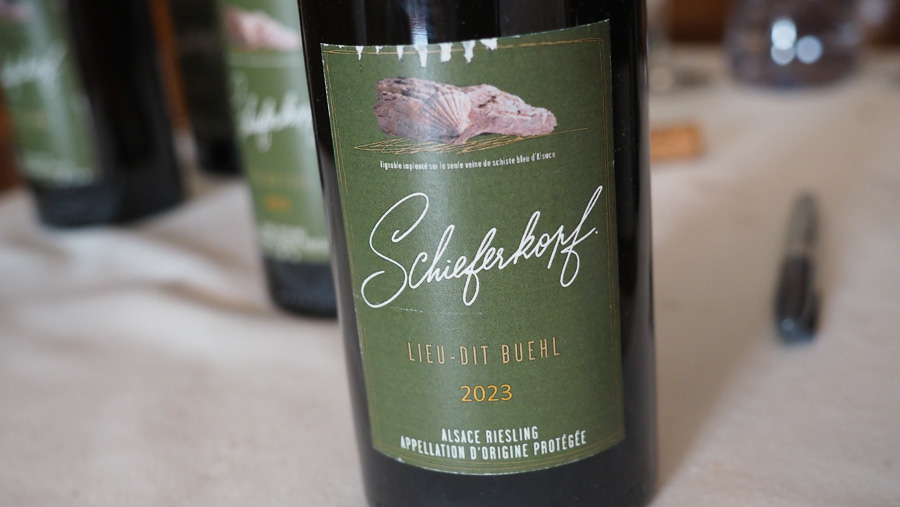
M Chapoutier Schiefferkopf Lieu-Dit Buehl Riesling 2023 Alsace
From a 1.2 hectare vineyard planted on a strip of blue schist. Steeply sloping, facing south. Matthieu compares it with Méal in Hermitage, because even though it is at a lower altitude it has a good depth of soil, 40-50 cm. It has good water retention in the clay above the blue schist. This is taut and mineral with a nice touch of reduction. The palate has lovely dense citrus fruit with some mealy detail and texture, showing volume and fine spicy notes. Beautiful fruit here with nice precision as well as a lovely, inviting richness. It’s dry but the fruit gives an impression of sweetness. 95/100
M Chapoutier Schiefferkopf Lieu-Dit Berg Riesling 2023 Alsace
From the same blue schist as Buehl, higher altitude, 350 m. This is generous and broad with some peachy hints as well as ripe, crystalline citrus fruit. Lovely texture here with nice depth, and a fine, spicy framing. Has generosity, but also some chalky, mineral detail. Offers a lot of pleasure. 94/100
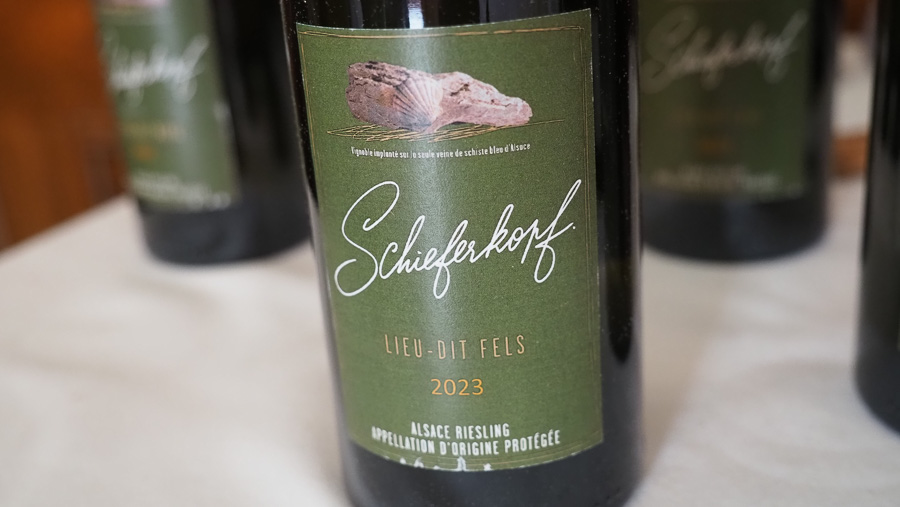
M Chapoutier Schiefferkopf Lieu-Dit Fels Riesling 2023 Alsace
0.8 ha single vineyard with shallow schist soils. Close to Buehl but ripens later. This is stony and bright, but has some honeyed depth. There’s an innate depth and richness here, but also some freshness. Finishes bright and quite mineral. Different in style, but with some depth and intensity. 94/100
The Rhône
In the Rhône the vineyards have been biodynamic for 30 years now. They have been working recently with bio-indicative plants, which is a new way to understand the vineyards. They work with a botanist who comes twice a year. Their biodynamic vineyards have up to 75 different plants: a vineyard they recently bought had just 10 different plants growing in it. ‘For us, to cultivate a diversity of plants in important.’
We have been trying to decrease the soil work that we do. ‘If you work the soils too much you dry the soil microlife and kill your soils,’ says Maxime. ‘We have been working more and more with animals.’ The animals in question are sheep, and more recently they have been trialling kun kun pigs, of which they have four. ‘They don’t bite the grass,’ says Maxime. ‘When the grass is bitten it feels the attack and takes more water from the soil.’ The pigs eat the roots rather than just biting the grass. ‘It’s pretty exciting to work with animals,’ he says. ‘It brings a good atmosphere in the team. Now the pigs are like dogs: you can call them and pet them.’
He explained that they try to keep some CO2 in the Rhône whites. ‘We always like to have a bit of fizziness in the wine – it helps to give a little bit of length.’
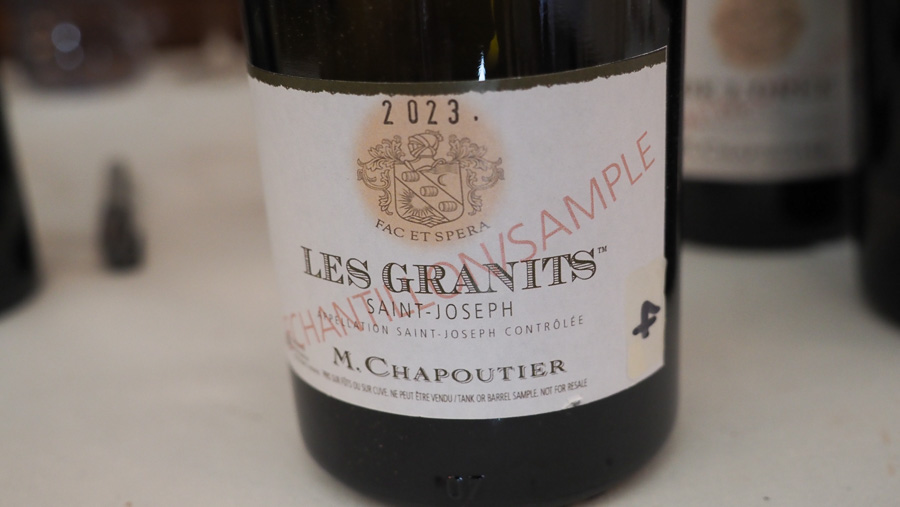
M Chapoutier Saint-Joseph Les Granits Blanc 2023
Old Marsanne vines, granitic soils. In the South of Tournon, with 60 years old. Saint-Joseph, 1800 ha, is sometimes hard to understand. But on the Tournon hill it is totally different. Granite de Tournon here, which has a high proportion of crystalline quartz. Lots of lees work in demi muids. Focused and quite powerful with a touch of reduction, showing fresh citrus and pear fruit with nice mineral reductive detail and some peach and apricot richness. There’s a slight bitterness on the finish which adds freshness. Rounded texture but also fine spiciness. 94/100
Hermitage was 136 hectares when it was founded in the 1930s, and it hasn’t grown at all since. ‘The real richness of H is that is a synthesis of all the soils you have in the R valley,’ says Matthieu, who thinks the diversity of Hermitage is one of its strengths. Chapoutier have 31 hectares here and are the largest producers, with 13 ha of whites, solely Marsanne.
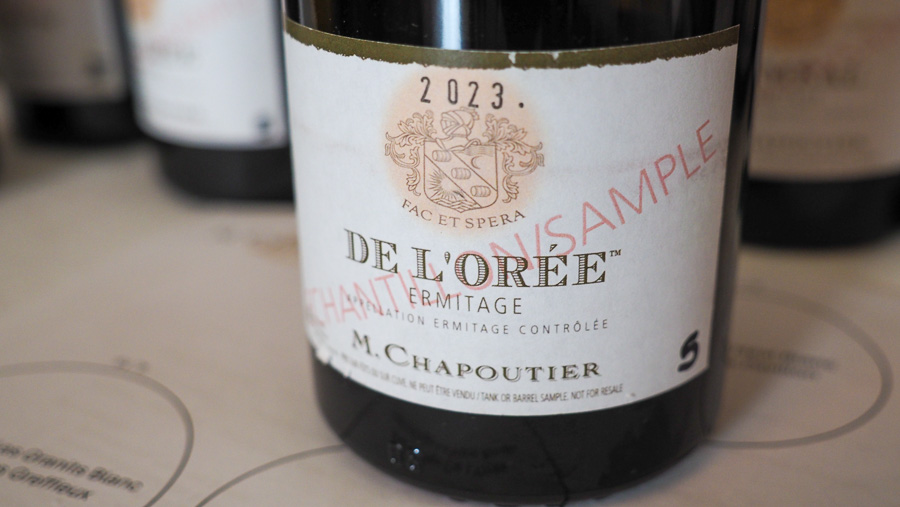
M Chapoutier Ermitage Blanc De L’Orée 2023
From the 3.5 ha Les Murets vineyard, 60-70 year old Marsanne, at the extreme east of the appellation. Broad, with good concentration, and crystalline citrus with some subtle meal, pear and peach. There’s a richness but also a sense of freshness, with notes of popcorn and honeysuckle adding complexity. Very fine and detailed on the finish. 95/100
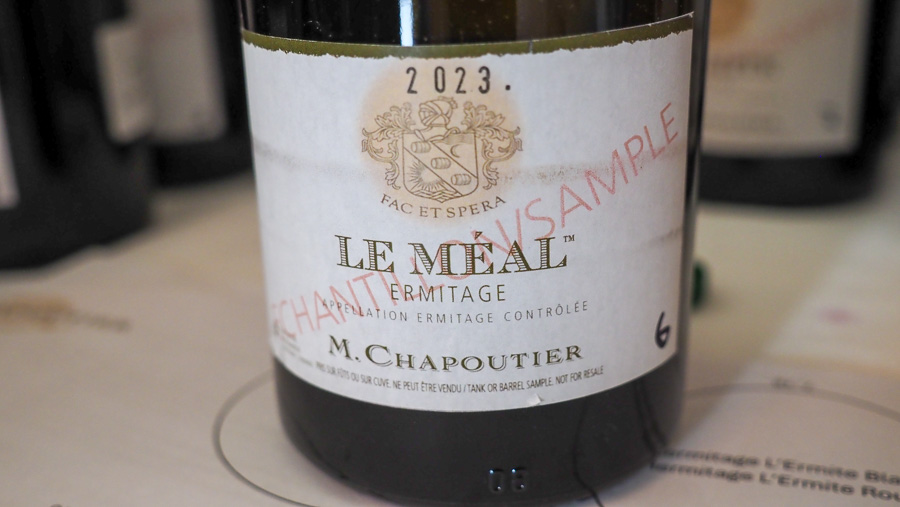
M Chapoutier Ermitage Blanc Le Méal 2023
Méal is 3.5 hectares. This comes from a 2 ha plot of old Marsanne, planted on alluvial deposits with large pebbles. There’s a slightly reductive note on the nose (some vinyl) as well as some fine green notes (the trademark tomato leaf that this plot often shows). The palate is textured and broad but currently dominated by the slightly awkward reductive characters. Pear and peach with a slight bitter twist. This should be really good in time, when it will get a much higher rating. 93/100
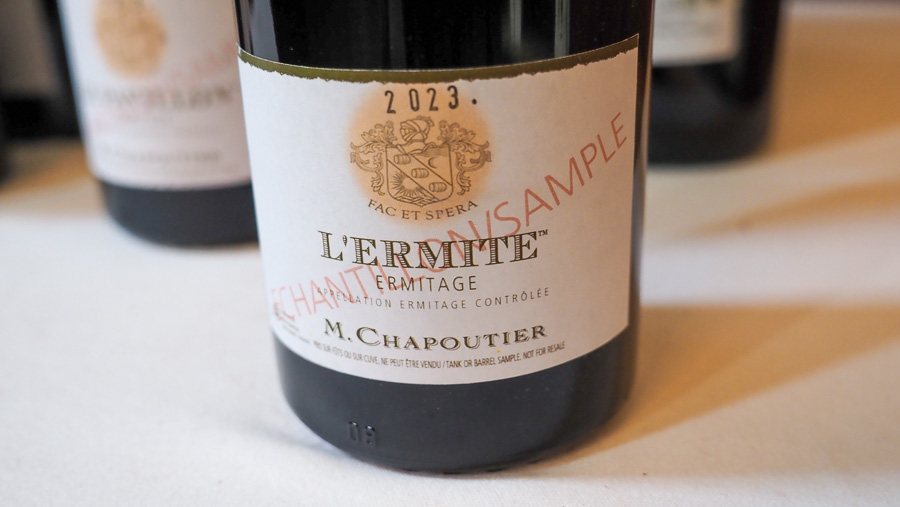
M Chapoutier L’Ermite Ermitage Blanc 2023
0.5 ha plot with old Marsanne, with some vines over 100 years old, at the top of the hill of Hermitage. Shallow granitic soils. Complex nose with citrus, pear, spice, mealy notes and some minerals. The palate is fresh and quite delicate with fine mineral framing to the pure pear, white peach and citrus fruit. This has real delicacy, but doesn’t lack flavour. A beautifully elegant and potentially long-lived expression of this site. 95/100
Châteaueuf has 3 different soils – north is sandy, west is pebbles, and the eastern part is molasses, with a massive block of limestone under the soil. The eastern terroirs are better adapted to hydric stress. They have 30 hectares in the appellation.
M Chapoutier Châteauneuf-du-Pape La Grenade 2023
Sandy soils, not galets roulés. 1 hectare block. This is the first time it has become a sélection parcellaire: previously it went into Bernadine. 30% whole bunch. Fermented in concrete then matured in sandstone/ceramic vessels of 400 litres. Lovely freshness on the nose: bright red cherries with a sappy edge, and a touch of redcurrant. Pure and fresh on the palate with nice spicy detail under the very fine, pure, direct red fruits, with a touch of orange peel. This has a wonderful fruity quality with a real finesse and elegance, with a lovely silky texture. This is utterly beautiful. 96/100
M Chapoutier Châteauneuf-du-Pape Barbe Rac 2023
An old vineyard, 100% Grenache, on galets roulés. Very low yields of 10-15 hl/ha. A bit of whole bunch, aged in concrete. This is ripe and concentrated with a core of sweet, ripe, textured black cherry and raspberry fruit. Rich, slightly peppery, with some nice tannins. Lovely fruit here, showing richness and spicy complexity, but also some freshness. This is quite beautiful, in a ripe, classical style. 95/100
For the northern Rhône reds, previously they did a lot of long extractions, but since 2015 they have done shorter macerations of 3-4 weeks versus the 5 weeks they used to do. Recently they have been using some 1200-1800 litre foudres as well as small oak.
M Chapoutier Crozes-Hermitage Rouge Les Varonniers 2023
Crozes-Hermitages was hillside viticulture, but in the 1950s they developed the appellation and now most of the appellation is on the flats, which are easier to work. Varonniers is a lieu dit on both Hermitage and Crozes-Hermitage. Combination of granitic and sedimentary soils. Bright, floral, slightly meaty and quite peppery. It’s pretty and elegant, with lovely floral qualities, some sweet wild strawberry and then the peppery, meaty cherry fruit. Has some fine green herbal hints. Really elegant and expressive, this is a beautiful wine. 94/100
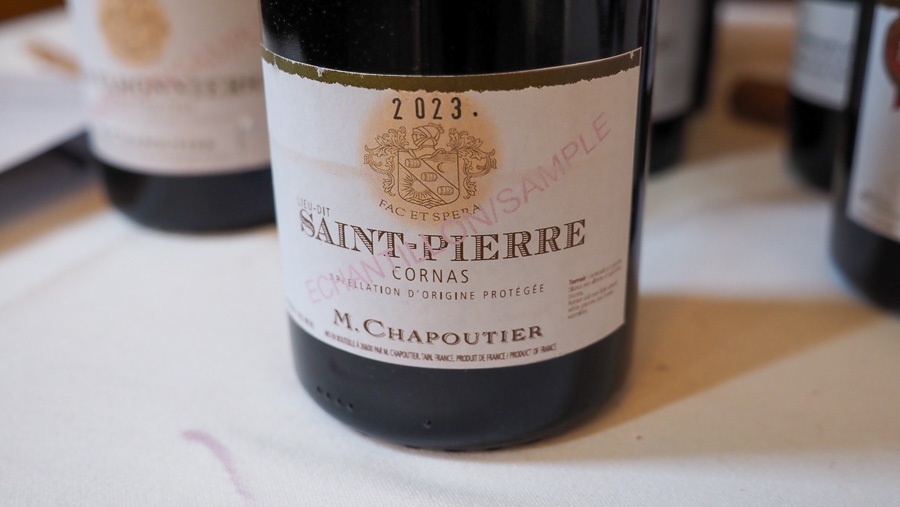
M Chapoutier Cornas Lieu-Dit Saint-Pierre 2023
Syrah from a southeast-facing lieu dit, mainly decomposed granite. On the top of the appellation of Cornas. It’s going through an interesting time, says Matthieu. In the past it was a bit too animal, but now they have a new expression of Cornas. Selection massale from Hermitage, begun planting in 2013. Supple and bright with nice tannins under the sleek, sweet cherry and berry fruits. Grainy and fine with a peppery edge. So supple and with lovely pure berry fruits, but also nice grip and should age well. 94/100
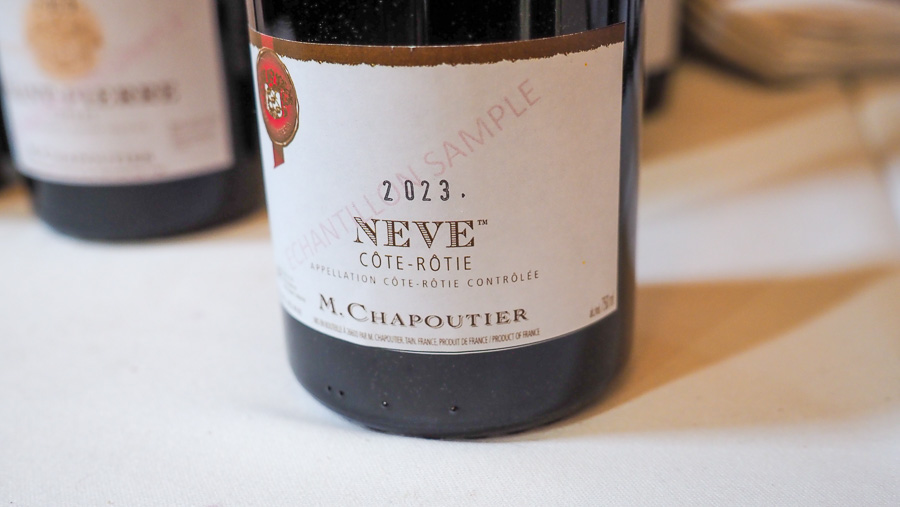
M Chapoutier Côte-Rôtie Neve 2023
1.5 ha Syrah vineyard on schist and mica soils. They started planting this 20 years ago, and it took 20 years to plant. It’s a very steep, terraced site. There are three producers with vines on this lieu dit, which is right on the rock. 20% new oak. Very fine and expressive, but also quite structured with some peppery hints, a bit of grip, and layered cherry and raspberry fruit. This is concentrated, with a core of ripe, pure sweet berry fruits, but also nice spicy framing, and some pure mineral notes. So fine. 96/100
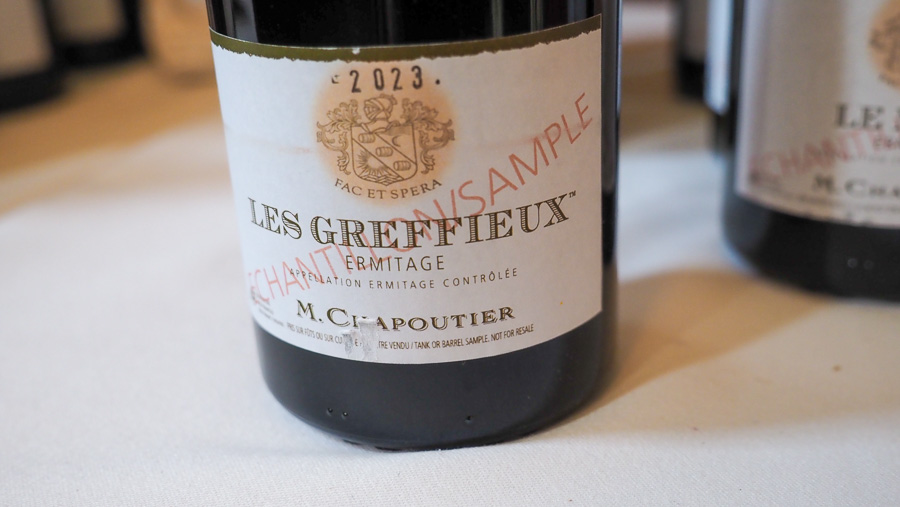
M Chapoutier Ermitage Rouge Les Greffieux 2023
At the foot of the hill on alluvial terraces with shingles and clay, underneath Le Méal, with a higher proportion of clay. This site retains water well. 10% whole bunch here. Lovely supple fruit here with ripe, sweet liqueur-like red cherry and berry fruits, with some exotic garrigue and even peach and passionfruit aromas in the mix. Generous, ripe and expressive with nice flesh and purity. Some stony detail here. 94/100
M Chapoutier Le Méal Ermitage Rouge 2023
0.6 hectare parcel on high terraces of pebbles and clay. Attractive floral cherry and raspberry fruit with some liqueur-like richness but also freshness. The palate is bright and surprisingly approachable with lovely vivid cherry and raspberry fruit, showing polish but also detail with nice fresh tannins, with a long, slightly grippy finish. Very fine and expressive, and will develop in interesting ways. 95/100
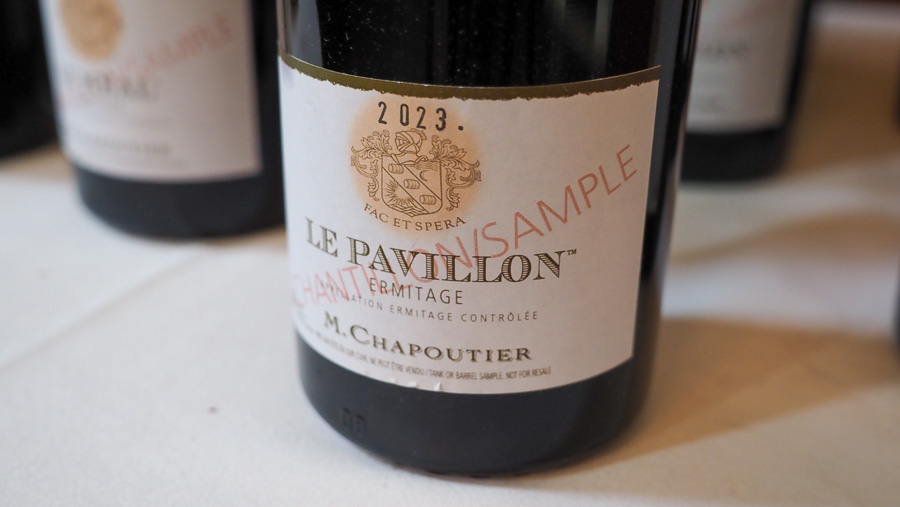
M Chapoutier Le Pavillon Ermitage Rouge 2023
From the 4 ha Les Bessards plot with 65 year old Syrah on granite-rich soils. Sweet, enticing berry fruit aromatics with some spice and pepper notes. The palate has nice concentration of freshness. There’s a beautiful texture to the palate with some grippy tannins sitting under liqourice-laced cherry and raspberry fruit. Nicely concentrated and layered with a wide dynamic range. 95/100
M Chapoutier L’Ermite Ermitage Rouge 2023
3 ha plot at the top of the hill, vines over 80 years on poor granitic soils. This has amazing concentration with a core of sweet, fine-grained cherry and raspberry fruit showing sleek textured with fine tannins hidden under the rich fruit. It’s polished and impressive with great depth and concentration, and will develop in interesting ways. 95/100
The Roussillon
The Roussillon has the same set up as the Rhone – they have rivers, the tramontane (the Rhône has the Mistral) and a huge geological diversity of soils. And some shared grapes. They have 80 ha in Latour de France, and Lesquerde which is higher up.
Domaine de Bila-Haut V.I.T 2023 Côtes du Roussillon Villages Latour de France
70 year old vineyard surrounded by garrigue. Sweetly aromatic focused cherry and raspberry fruit on the nose. Fresh with some herbal hints. The palate is juicy and focused with nice sweetness, showing tart cherry and raspberry fruit with some good tannin. Very fresh and detailed, with a bright personality. Lovely. 94/100
Domaine de Bila-Haut R.I. 2023 Côtes du Roussillon Villages Lesquerde
North facing plot called Fount de Bessou, iron-rich granitic sands. Vines on echalas, 100% Syrah. Higher altitude. There’s generosity but also lovely focus here. Bright and vigorous with some olive and pepper notes adding interest to the vivid, floral black cherry fruit. Good structure and nice precision, showing lovely concentrated fruit but also freshness and detail. Such a beautiful expression of Syrah. 95/100

